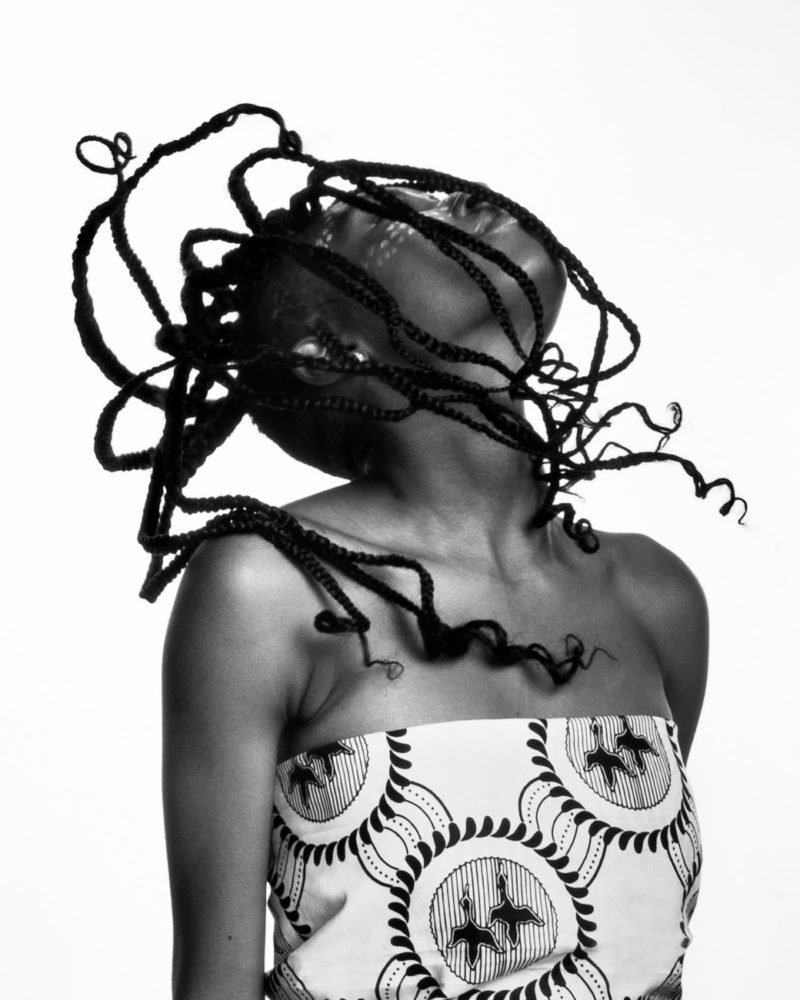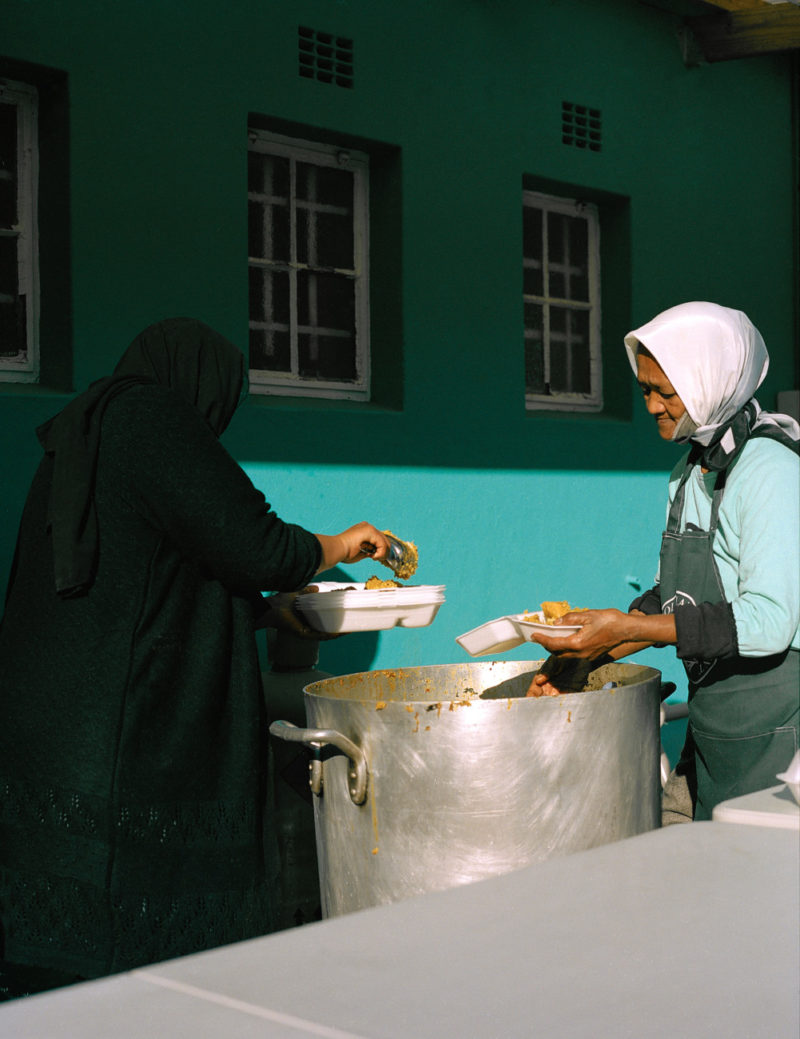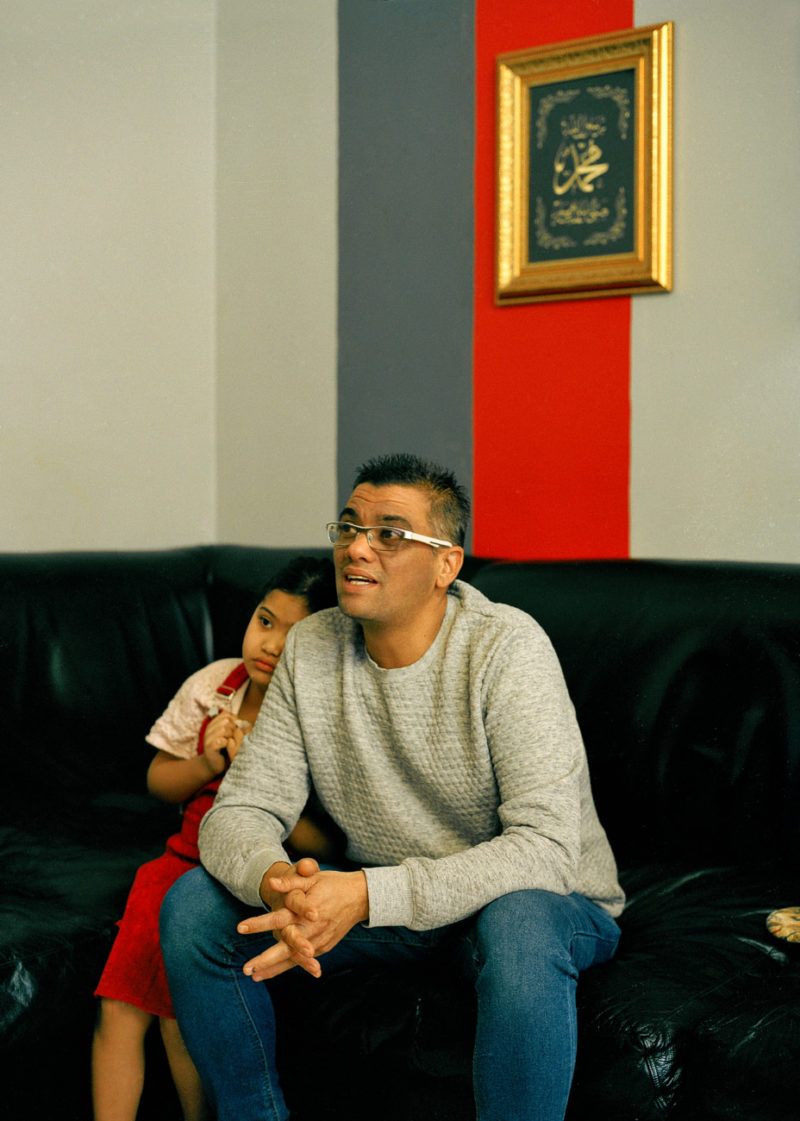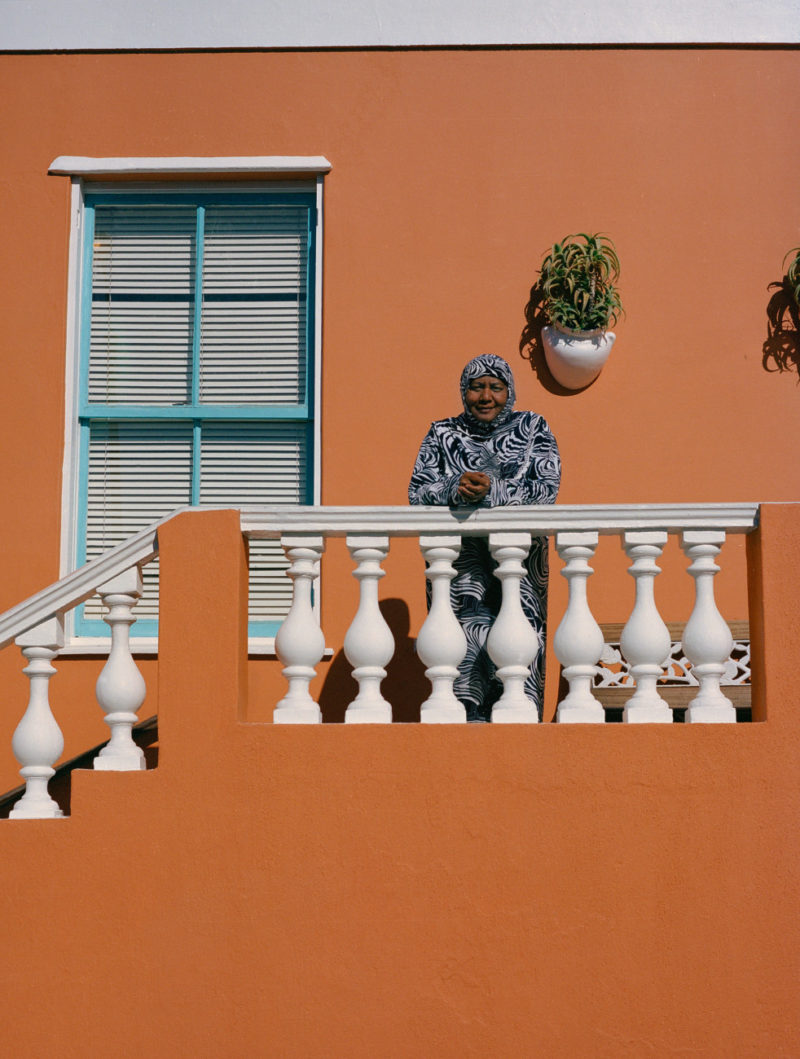Ayesha Kazim is a freelance photographer working between New York City and Cape Town, South Africa. Her photographic practice involves producing clean, refined portraits that bring fresh, lively energy to her subjects through colorful, yet coordinated settings and styling. Having honed her craft while living and learning in fourteen countries during her formative years, Ayesha’s work draws inspiration from a wide range of cultures and experiences that aid in her ability to connect with her subjects and produce meaningful portraits.
Through her work, Ayesha seeks to capture intimate, candid moments of everyday life that spurn out of organic connections and emotions. Ayesha finds inspiration in moments of rest, introspection, and childlike wonder which materializes itself in the photographing of subjects that exude resilience, power, and a humbling sense of confidence.

Emerald Arguelles: I’m very interested to hear about your background and how you became interested in photography?
Ayesha Kazim: Okay, well, so growing up, my dad, he works in the arts, he’s an actor. So I was always surrounded by that, and he did a lot of film and TV. But he also did theater and play production, things like that. So I was always surrounded by writers, directors, different types of artists, things like that. But I think the first encounter I had with photography was when I was about ten years old; one of his friends brought a camera to me, and we were at someone’s house. He just let me run around with it. From that moment, I became obsessed with the medium; I got my little camera and started taking photos of family and friends. I only started taking it seriously in about high school towards the end of high school. I went to a boarding school that moved around every three months. So, being able to document this experience was significant for me. It opened me up to different cultures and different types of people. Because I was also very introverted and shy, having that camera brought me out of my shell forced me to confront people, talk to them, and hear their stories. So that was a significant shift for me. Then obviously, applying to NYU now, that was like, “I’m taking this seriously, this will be a career” whether I have doubts or not, I want to go into this full force.

EA: Who or what are your inspirations?
AK: I mean, for me, it’s definitely I don’t find myself looking too much at historical figures when it comes to photography. I am so inspired, maybe because I spend quite a lot of time on Instagram and social media platforms. Black photographers today like Dana Scruggs and Micaiah Carter, just seeing the work they produce are so beautiful and rich. And so, just such a great depiction of black life today, and what we’re striving to do in showcasing our community and bright light continuously amazes me. The color palette that I try and use in my work. It’s enjoyable; it’s very bright, it’s very bold because I want this to be something that’s not like you said about the black plight and black suffering and struggle; it should be a more inclusive and representative to a showcase of what it means to be black today. It stands for a greater meaning beyond just this being a photo of a person. You know, that’s something that I find challenging but very important to do when you’re trying to figure out how your work is going to sit within history.
EA: I think those inspirations and just finding those doing that work is amazing. I think it also comes with time, like Deana Lawson, which is the goal for me. She’s the mountain top, and her confidence shines through her subjects like it’s insane, what she’s been able to do with the medium, even in those small things that we see and that we admire, and other photographers’ work. So my next question would be, what has been your greatest accomplishment?



EA: I think those inspirations and just finding those doing that work is amazing. I think it also comes with time, like Deana Lawson, which is the goal for me. She’s the mountain top, and her confidence shines through her subjects like it’s insane, what she’s been able to do with the medium, even in those small things that we see and that we admire, and other photographers’ work. So my next question would be, what has been your greatest accomplishment?
AK: Honestly, every time I complete a project, I feel very accomplished. In terms of that, I’m especially one of the most recent ones working on a documentary series called “This Home of Ours,” which focuses on the Bo Kaap community within Cape Town, South Africa. And this is an area that’s predominantly Muslim. Starting in the 18th century, they were brought over as slaves from Malaysia, Indonesia, all parts of Africa by the Dutch and British colonial influences. And so now in Bo Kaap up, you have this very mixed community of people of color and black people living there. Last August, coming back to Cape Town, I decided for my senior thesis that I wanted to document Bo Kaap because it was a place I was born. Still, I moved away when I was very young. But now returning, it was kind of this full-circle moment where I got to really talk to the people that still live in the community and learn about how gentrification, as well as the pandemic, has been affecting them, and also to see what kind of the steps that they are, have been taking to really preserve, like the history of this community, because it is very small, but it is very important. It’s kind of like, in my opinion, the crest or like the very origins of Cape Town as it is today because of that kind of melting pot of people in this one space. And so, I think diving into that project, I’m delighted that I decided to do it, because it’s something that I think I want to work on, you know, for the rest of my life. It’s such an important area, even in the last five months, it has really changed in terms of like building, seeing them build community gardens and built, putting together this cultural hub where tourists who are moving in or visiting can really learn about the community instead of this coming, taking photos and leaving. And so, yeah, I think that has been a big accomplishment and just also talking to people learning their stories and with photography becomes really difficult to because you have to be vulnerable as well as the photographer in terms of like, going into people’s faces and listening to their stories and also having that, that knowledge to know how to best present them and present yourself to them and like it’s a very, I can’t put it all into words. Still, It’s very much this give and take, like a relationship that you have, when entering communities that are, you know, historically significant. You’re aiming to tell someone else’s story for them.
What’s crazy about Bo Kaap because this community, to a lot of the population in this community, grew up or lived in district six beforehand, during apartheid, and then what’s district six was burned down, they moved to Bo Kaap. So it’s like having this second cycle of displacement happening, you know, in the present day is such a critical moment in time in terms of preserving this community. Because if it doesn’t happen now, it’s never going to. Buildings are starting to be built, and more commercial properties, trying to infiltrate the community. It’s just crazy to see all the different layers that are tied to this neighborhood’s history.



EA: What have been their efforts to preserve it? Do they have any plans moving forward in any way that people who are not in Cape Town can help?
AK: So I mean, a lot of the people I’ve talked to in the community have come down to being as come down to like education. Firstly, the tourists coming into this area, because many people from overseas are coming to Cape Town moving to Bo Kaap for the property prices are cheap. Whereas like for the community that lives there, it’s not. So they’re buying up real estate and then renting it out via Airbnb and stuff like that, which is, of course, pushing up the prices. So being with the cultural hub, which this woman started, she has made it her mission to set up this space within a building in Bo Kaap. It goes through the history and the importance of Islam within the community. Because this is an area where you’ll hear the call to prayer three times a day, or people will go to the mosque, there are many different mosques within Bo Kaap. There’s a burial ground where they had different Islamic leaders within the community laid in this sacred site. Having this space where people can become educated is, first and foremost, one of the things they’re doing. Some of the members have also like banded together; there’s a group of women who have created this community garden. And especially right now, with the pandemic, they’ve cleared out this lot for people to have a space to get food, to grow their own crops, to learn how to take care of themselves, like the work that they’re putting in just by themselves with no help from the government is just astonishing to see. In terms of supporting from afar, right now, there, I mean, there are like petitions that I can send you, and just also doing your research on the community would be great. We’re trying to work to put together this documentary and hopefully fundraise for some women to continue working on this garden.



EA: What would you like the viewers to take away from your work? Is there anything you would want them to know about your work?
AK: I think for me, first and foremost, I want people to see the confidence within the subjects that I present. And not only that but the sense of, like nobility that comes through that I hope comes through in my work, because a lot of the subjects that I do photograph are a Black woman. I want them to be represented in a light that’s very, that’s more true to who they are, and not these different tropes of the strong black woman or the angry black woman or things like that. I want to show the truth to who they are and the essence of them as individual people. And I think that comes through and the styling of my subjects and the different environments that I choose to shoot them in. So for me, that’s very important. Just also knowing that you can feel who they are in terms of, “Oh, this could be your friend,” this could be like your aunts, could be your parents, you know, they’re there every day. These are everyday moments. And I want it to be these kinds of candid depictions and more so fall into, like the vernacular world of photography. In contrast, you could look back at this in a couple of years and really see that this was like a part of the time and not just a fashion shoot or editorial shoot; it’s more, it’s more than that. It’s more about who they are and just showcasing them in their best, in a confident light.


To view more of Ayesha Kazim’s work please visit their website.